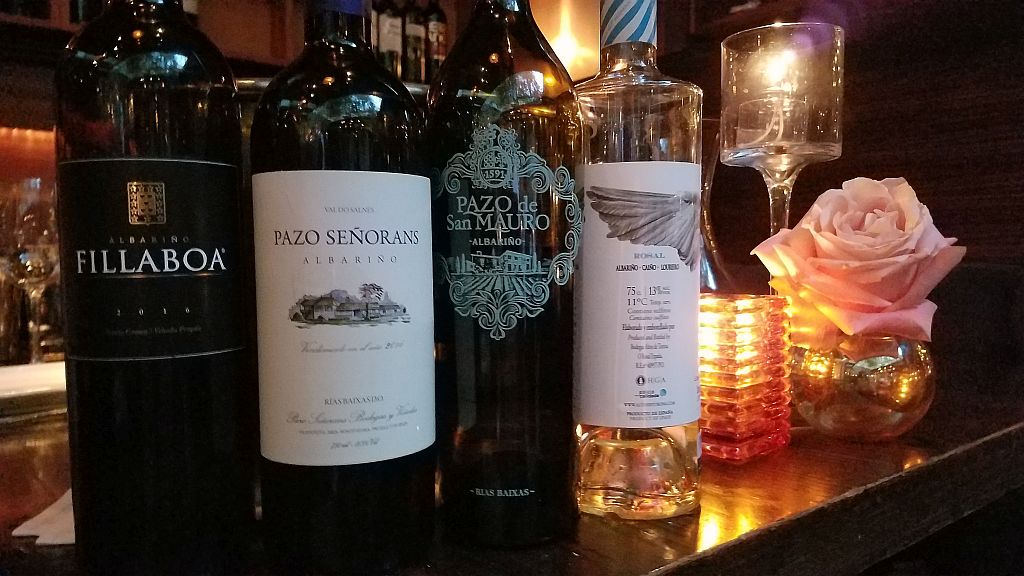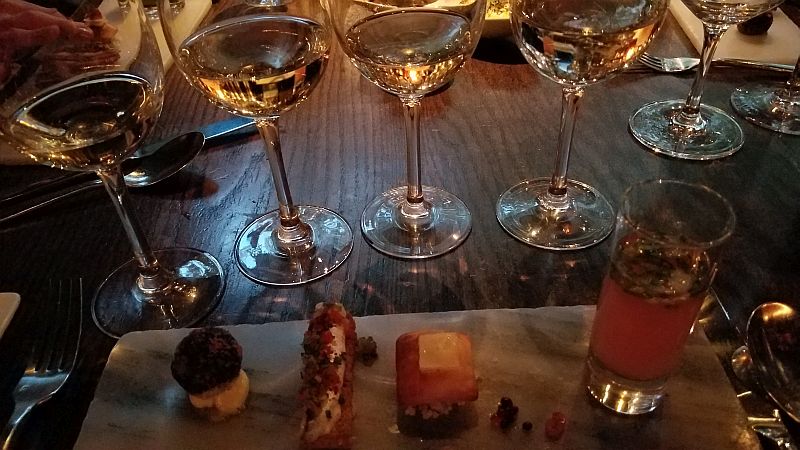If you live in the northeast, there are years—like this one— that you wondered if summer would ever arrive. Now, consider Galicia: the northwest corner of Spain, where cool, rainy springs help the albarino grape turn into refreshing summer wine.
Galicia hugs the Atlantic Ocean, receiving the ocean’s mist and substantial rainfall throughout the year, which defines Rias Baixas (REE-ahs BUY-shuss), the signature wine region here. This cool, maritime climate makes it a nearly-exclusive white wine region: Only one percent is red grapes. Albarino occupies 90 percent of the vineyard plantings.
The granite soil in the region provides the brisk minerality in the wines, as well as the granite columns–called pergolas, and standing up to seven feet high—that hold the wire trellises for the vines to grow on.
Trellised at this height, the ocean breeze flows through the vineyard preventing mildew and other humidity-triggered diseases, and allows the precious sunshine to ripen the grapes. During harvest, pickers stand on grape bins under the canopy snipping the ripe bunches. With the slow maturation, the grapes retain a bracing acidity making the wines ideal for a summer aperitif, or with oysters, shrimp cocktail, and seafood salads with diced mango or pineapple. And the modest 12.5 percent alcohol level is as welcome as the Galician sunshine
Last month, I tasted an albarino quartet at Salinas, an eye-pleasing, comfortable dining room in Manhattan’s Chelsea neighborhood. Its flower arrangements and plethora of candles made me think it was a perfect place for a séance, but it was my spirit that was rising after the first taste of Chef Luis Bollo’s delicious Spanish food.
In 2003, Rioja’s Peyalo de la Mata, the 13th Marques de Vargas, acquired the 16th century Pazo de San Mauro estate, restored the building and constructed a new winery. The 2015 Pazo de San Mauro wine is pure albarino.
A warm and dry summer and the vineyard’s southern exposure delivered healthy grapes in 2015, giving this wine a white floral scent, and mild almond and ripe, pear flavor. A nice, round mouth feel and soft acidity testify to the grapes’ maturation and the wine’s pleasure. 88 points. Retail is approximately $17.
Six months ago, I reported on the 2015 Pazo Senorans (see Uncommon wines at a Commoner’s price), but tasting another bottle of it at Salinas with Chef Bollo’s savory Berkshire pork belly with diced cucumber and radish brought a new perspective.
Made from only albarino, the wine’s citrus and sea-salt aroma and white-fruit flavor were instantly pleasing, while its clean line of acidity cut through the fat of the pork belly. The 2015 Pazo Senorans did what a well-made wine and food pairing is meant to do: make the whole greater than the sum of the parts. 90 points. Retail prices range from an advantageous $17 to an off-putting $27.
Located in Rosal, one of the five subzones of the region, Altos de Torona is fewer than five miles from the Atlantic Ocean. Its hillside vineyards are terraced to capture the warm air and allow for rapid runoff of the rains. It plants five of the 12 permitted grape varieties, and uses three—albarino, loureiro and caino—to make the 2015 Altos de Torona.
Its floral and mild citrus scents combine with a creamy texture, offering another version of Rias Baixas wine. It was a good mate to a sautéed squid coated in panko bread crumbs, and dressed with a flavorful, and visually stunning black-ink lime sauce. 88 points. And a great-value at $12 to $15.
The 2015 Fillaboa Rias Baixas is from the 173-acre Fillaboa vineyard planted exclusively with albarino at the southern tip of the region where Spain meets Portugal. Its lemon-lime aroma and flavor has a sea-salt accent that give the wine a pleasing edge. It was enjoyable with a smoked trout and red caviar appetizer. 88 points. Prices range from a good-value $15 to an acceptable $23.
Now that summer’s officially here, let’s hope you don’t have to wait for the sun to shine to enjoy your own glass of albarino.
Photos by John Foy










Leave A Comment